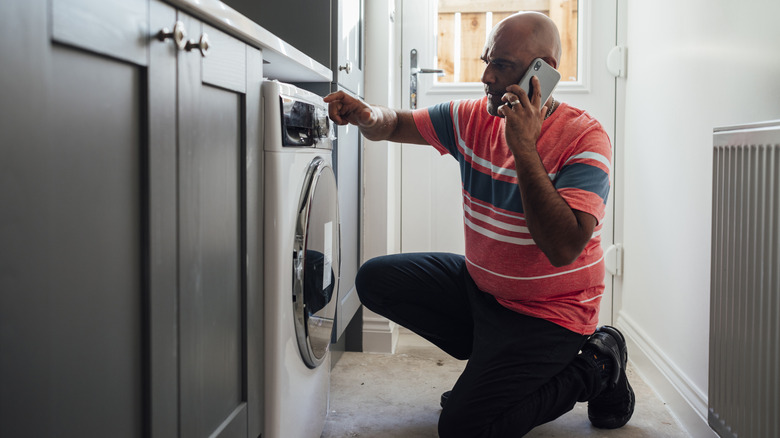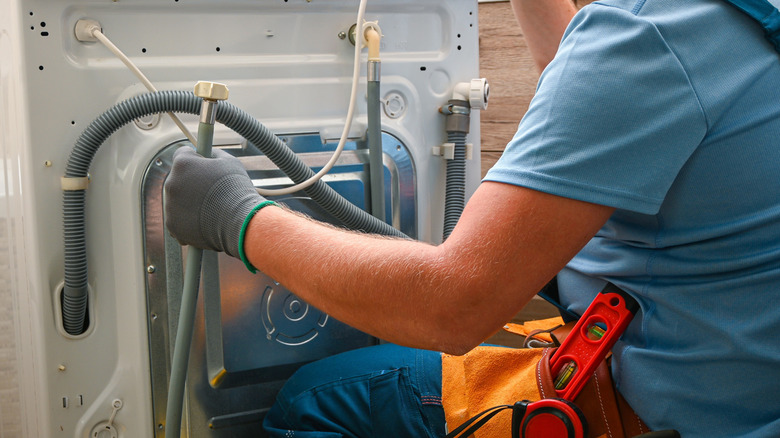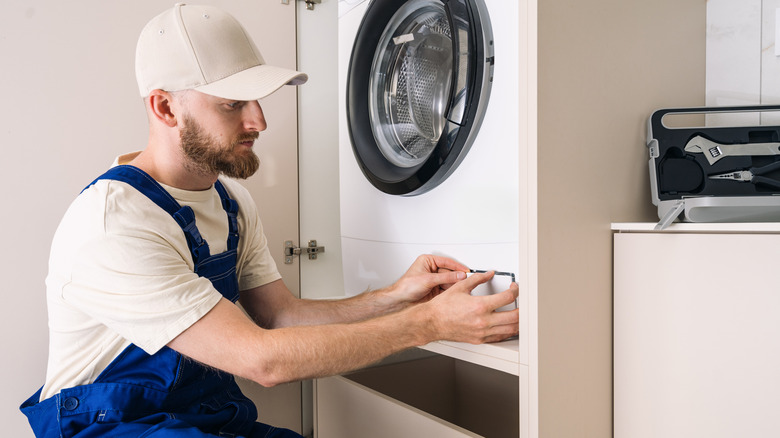How To Drain A Washing Machine (The Right Way)
Walking up to your washing machine and finding the drum full of standing water is one of the frustrating experiences of doing laundry. That heavy load of clothes is now trapped in the machine, and trying to scoop out gallons of water by hand just won't work. There can be many reasons why a washing machine won't drain, but the first thing to try is manually overriding the cycle. Both top- and front-loaders sometimes get stuck before the last drain and spin cycle, which stops the automatic draining. Switching the machine to a spin-only cycle often forces it to start draining, and it sometimes clears the issue.
In the event that doesn't work, try unplugging your machine for a full minute, then plugging it back in. This can reset a temporary electronic glitch in the system. Before attempting other solutions, you'll need to turn off the power to the washing machine. Unplug it or flip the circuit breaker to keep you safe from electrical shock and stop the washer from accidentally starting while you're working on it.
If you've exhausted these easy options (and turned off the electricity connected to your machine), it may be time to get your hands dirty. There are slightly different steps for draining top-loading machines and front-loading machines. Still, either way, you'll need to gather a bucket and several towels before locating the drain to begin removing the water.
Top-load draining and troubleshooting
When your top-load machine ignores the reset commands, you'll likely want to call a friend to help remove the water — as these machines are much heavier when full. The idea is to use the large drain hose in the back of the machine (typically gray or black) to create a gravity siphon. Carefully pull out the washer from the wall, place a stack of towels and a bucket on the floor, and lift the end of the drain hose out of the standpipe. Quickly lower it into your bucket, and water will pour out immediately. To stop the flow, lift the hose back up and put it in the drainpipe before emptying the container. If your hose is near the top, you can use a second, smaller hose to create a siphon that pulls the water into the bucket on the floor.
Once the water is gone, check to see if the drain hose is kinked. You can fix this by straightening the tube behind the machine. If the issue is a clog deeper inside the drain line, disconnect the main drain hose completely from the back of the machine. Inspect the hose for any obstructions, or use a plumber's snake to feel for and dislodge any debris. This is also a good time to clean the inside of your washing machine.
Front-load draining and troubleshooting
Front-loaders need a different approach since you can't open the door while the drum is full. You need to find the drainage filter, which is typically hidden behind a little door on the front of the machine. Check your owner's manual for the exact location and instructions to open the panel. Once the panel is off, place a shallow container and towels under the filter cap. Slowly turn the filter knob counterclockwise just enough to let the water start to trickle out. Opening the knob too quickly will cause too much water to come out at once and potentially cause a mess.
Tighten the knob to stop the flow when the container is full, empty the container, and repeat until all the standing water is gone. The drainage filter is designed to catch objects like coins, lint, hairpins, or even socks, which are the most common causes of clogs in front-loaders. After draining, clean the filter with a soft brush and warm water. It's recommended to clean the front-load filter every one to three months, depending on frequency of use.


